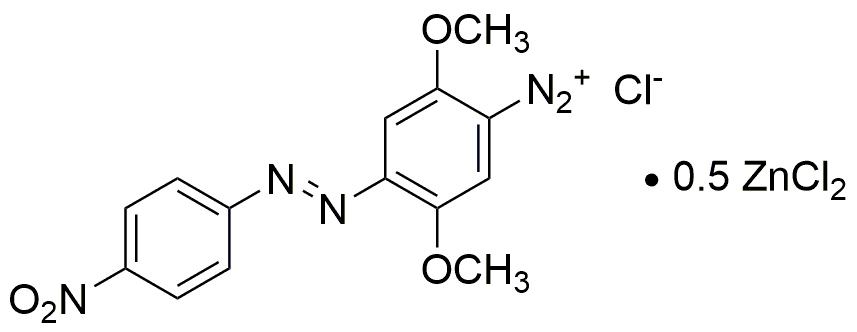Fast black K salt is widely utilized in research focused on:
- Dye Manufacturing: This compound serves as a key ingredient in the production of various dyes, particularly in textiles, providing vibrant colors and excellent lightfastness.
- Biological Staining: In histology and microbiology, it is used for staining tissues and cells, aiding researchers in visualizing structures under a microscope.
- Analytical Chemistry: Fast black K salt is employed as a reagent in analytical techniques, helping to identify and quantify substances in complex mixtures.
- Environmental Monitoring: It plays a role in detecting pollutants in water samples, contributing to environmental safety and compliance with regulations.
- Art Conservation: The compound is used in the preservation of artworks, as it helps in stabilizing colors and preventing degradation over time.
General Information
Properties
Safety and Regulations
Applications
Fast black K salt is widely utilized in research focused on:
- Dye Manufacturing: This compound serves as a key ingredient in the production of various dyes, particularly in textiles, providing vibrant colors and excellent lightfastness.
- Biological Staining: In histology and microbiology, it is used for staining tissues and cells, aiding researchers in visualizing structures under a microscope.
- Analytical Chemistry: Fast black K salt is employed as a reagent in analytical techniques, helping to identify and quantify substances in complex mixtures.
- Environmental Monitoring: It plays a role in detecting pollutants in water samples, contributing to environmental safety and compliance with regulations.
- Art Conservation: The compound is used in the preservation of artworks, as it helps in stabilizing colors and preventing degradation over time.
Documents
Safety Data Sheets (SDS)
The SDS provides comprehensive safety information on handling, storage, and disposal of the product.
Product Specification (PS)
The PS provides a comprehensive breakdown of the product’s properties, including chemical composition, physical state, purity, and storage requirements. It also details acceptable quality ranges and the product's intended applications.
Certificates of Analysis (COA)
Search for Certificates of Analysis (COA) by entering the products Lot Number. Lot and Batch Numbers can be found on a product’s label following the words ‘Lot’ or ‘Batch’.
*Catalog Number
*Lot Number
Certificates Of Origin (COO)
This COO confirms the country where the product was manufactured, and also details the materials and components used in it and whether it is derived from natural, synthetic, or other specific sources. This certificate may be required for customs, trade, and regulatory compliance.
*Catalog Number
*Lot Number
Safety Data Sheets (SDS)
The SDS provides comprehensive safety information on handling, storage, and disposal of the product.
DownloadProduct Specification (PS)
The PS provides a comprehensive breakdown of the product’s properties, including chemical composition, physical state, purity, and storage requirements. It also details acceptable quality ranges and the product's intended applications.
DownloadCertificates of Analysis (COA)
Search for Certificates of Analysis (COA) by entering the products Lot Number. Lot and Batch Numbers can be found on a product’s label following the words ‘Lot’ or ‘Batch’.
*Catalog Number
*Lot Number
Certificates Of Origin (COO)
This COO confirms the country where the product was manufactured, and also details the materials and components used in it and whether it is derived from natural, synthetic, or other specific sources. This certificate may be required for customs, trade, and regulatory compliance.

